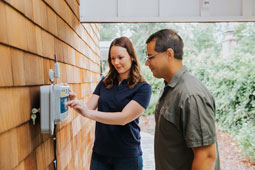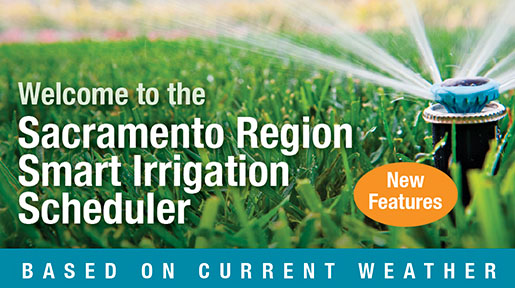 By Debbie Arrington
By Debbie Arrington
Guest Writer
Smart technology is only as smart as the person who inputs basic information. That includes all sorts of technology – including smart sprinkler timers.
“One of the challenges (to more efficient irrigation), the smart controllers available now all require some level of knowledge,” explains David Fujino, Executive Director of the California Center for Urban Horticulture at UC Davis and Co-Director of the UC Nursery and Floriculture Alliance. “They’re not plug and play; you have to know something. For the non-gardening public, some of the (inputs) – slope, soil type, plant type, sunlight, irrigation type – may not make sense.
Closing that education gap will go a long way in creating more sustainable landscapes. So will smart irrigation tools such as high-efficiency rotary sprinkler nozzles and Eco-Wrap driplines and mats.
That smart technology does work; the California Center for Urban Horticulture has proof.
Since 2020, the Center has been testing various irrigation methods and new technology in its SmartLandscape project. (Learn more here: https://ccuh.ucdavis.edu/smartlandscape.)
Located at UC Davis, the SmartLandscape project puts water-wise technology to the test. Every ounce of water dispersed and applied to demonstration landscapes is measured, and so is the actual water used. The project includes eight cool-season turf plots, two warm-season turf plots, two turf alternative plots (planted with Kurapia), and multiple mixed-landscape zones (planted with shrubs, natives and perennials). All of these installations use various cutting-edge irrigation, water-sensor technology, and water-efficient plant species. Students learn about irrigation and technology while monitoring the plots.
“How do you know it’s a low-water landscape? We’re actually measuring it,” Fujino says. “We study how they work, what are the challenges and really educate the students. At the same time, we’re getting a better understanding of which plants perform best in this setting.”
After three full years of growth and water data, the SmartLandscape project is now providing solid results, Fujino says.
“If you design and install, manage and maintain a landscape according to (water-efficient) guidelines and utilize smart irrigation technology and have the knowledge or assistance in programming, I’m convinced you can save water and live up to water-saving ordinances,” Fujino says.
Some results were surprising. “One thing we discovered, native plants establish better with spray (irrigation), not drip,” he adds. “It’s also much easier (to save water) with a brand new landscape than a retrofit.”
Management is key, Fujino says. Landscape water needs change with the weather and the season, which means irrigation controls should be tweaked once a month as needed. Don’t set it and forget it; regularly review how plants are growing.
“Low water-use plants don’t save water; the person who manages the irrigation controller saves water,” Fujino says. “If you don’t change your irrigation schedule, you use the same amount of water. We want to send the message: Low-water plants are great, but only if you manage your irrigation system.”
Spring is the perfect time to evaluate your landscape’s irrigation needs, Fujino adds. “I really, really recommend doing a quick assessment of your irrigation system. Check for leaks and mismatched nozzles and heads. Your sprinkler nozzles and heads all need to match or your system won’t run efficiently. That’s the low-hanging fruit for water savings.”
It’s also smart to make the most of available rebates from your water provider to install updates. Most local water providers have rebates available for high-efficiency sprinkler heads.
Although they’re not yet at that plug-and-play stage, smart sprinkler timers make managing irrigation much easier than old-style sprinkler timers. If you have questions about input – clay versus loam, shade versus sun, etc. – ask an expert for help. Local nurseries can provide some of that information. So can UC publications. The Center’s website has a wealth of water-saving and irrigation information.
“The real proof: Look at your landscape,” Fujino says. “How are your plants? Do they look healthy? Then, you know your water-wise irrigation is working.”
Learn more:
- What’s the Smartest Sprinkler for Your Yard?
- How to Have a Healthy Lawn with 30% Less Water
- How to Have a Smart Yard
- How to Set Your Sprinkler Timer for Healthy Plants
Debbie Arrington is a longtime home and garden reporter and co-author of the blog Sacramento Digs Gardening: https://sacdigsgardening.californialocal.com/

